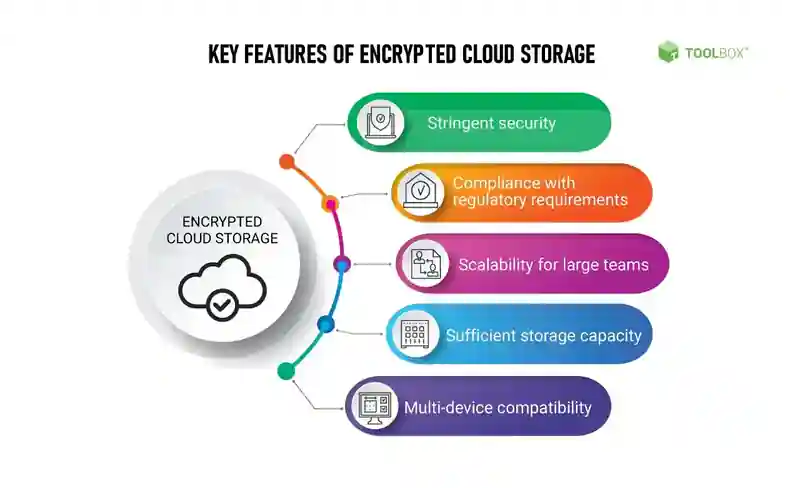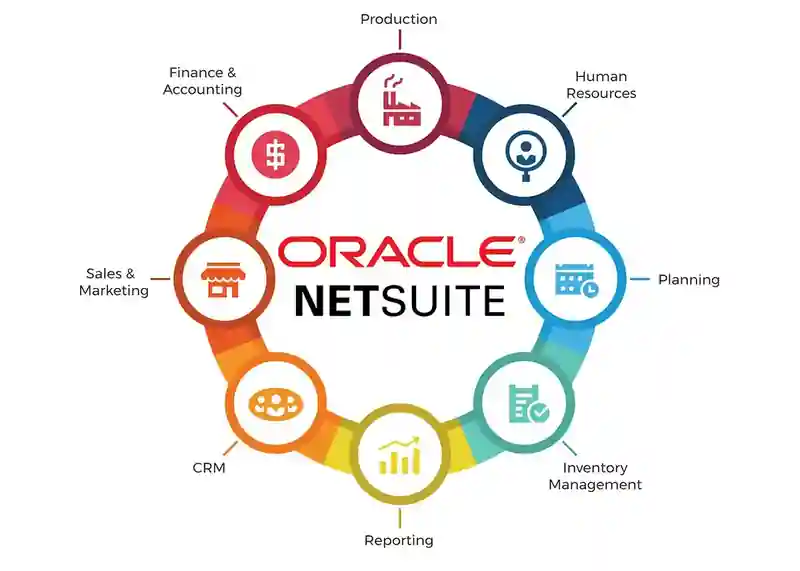Financial Accounting Software for Small Business
Financial accounting software can be a game-changer, providing critical support and insights to drive business success. This blog post will explore essential aspects of choosing and implementing financial accounting software that meets the unique needs of small businesses. We'll begin by understanding the specific financial requirements these enterprises face, then assess the essential software features that enhance accounting efficiency.Integration with other business tools and a smooth implementation process are also crucial. Additionally, training your team to utilize the software's full capabilities and analyzing financial reports will empower your business to grow and thrive. Dive in to discover how the right financial accounting software can transform your small business.Discover how to assess small business financial needs, choose efficient accounting software, integrate business tools, ensure smooth adoption, train staff, and analyze reports for growth.
Understanding Financial Needs of Small Businesses

When it comes to successfully managing a small business, understanding the financial needs of small businesses is crucial, because it lays the foundation for sustainable growth and operational efficiency, allowing business owners to make informed decisions that enhance their financial health.
At the very core, small businesses require robust strategies to manage their cash flow, and recognizing the intricacies of one's financial needs is the first step in creating these strategies. The essence of a strong financial foundation can be broken down into a few essential components:
- Effective cash flow management
- Accurate expense tracking
- Precise revenue forecasting
- Strategic budgeting
- Access to working capital
Small business owners must be adept at navigating these components to ensure the longevity and prosperity of their ventures.
To dive deeper into understanding these financial needs, a comparison between different financial accounting software can be very enlightening. Let's look at a simplified example:
| Financial Need | Accounting Software Features |
|---|---|
| Cash Flow Management | Automated Invoicing, Alerts, and Cash Flow Dashboards |
| Expense Tracking | Receipt Scanning, Categorization, and Expense Reports |
| Revenue Forecasting | Analytical Tools, Sales Projections, and Trend Analysis |
| Strategic Budgeting | Budget Templates, Historical Data Analysis, and Comparison Tools |
| Access to Working Capital | Credit Management, Loan Amortization, and Cash Advance Integration |
A thorough examination and understanding of these features help small business owners to tailor their financial management strategies effectively to meet their specific requirements.
Moreover, by implementing the right financial accounting software that encapsulates these features, small businesses can enjoy streamlined operations which will in turn enhance their growth trajectories. By focusing on core financial needs and utilizing advanced accounting tools, businesses can position themselves to not only survive but thrive in competitive markets.
Evaluating Software Features for Accounting Efficiency

When evaluating software features for accounting efficiency, businesses must meticulously consider a range of functionalities that can streamline operations and enhance productivity. Modern accounting software aims to minimize manual entry and maximize automation to reduce the risk of human errors while saving time. Features such as automatic bank reconciliation, recurring invoice templates, and expense tracking are essential components that small businesses should seek out. Moreover, robust reporting capabilities that can generate detailed financial statements and real-time analysis are imperative for making informed business decisions.
Key functionalities to look for when assessing the efficiency of accounting software include:
- Expense and Income Tracking: This feature allows businesses to effortlessly track all financial transactions, ensuring that nothing slips through the cracks. It also helps in categorizing expenses, which can be crucial for tax preparations and financial forecasting.
- Invoicing and Billing: Efficient invoicing systems can streamline the billing process, automatically generate invoices, and send out reminders for unpaid invoices, enhancing cash flow management.
- Automation of Routine Tasks: Automating repetitive tasks such as data entry, bank feeds, and payroll processing can significantly reduce administrative workload, allowing focus on strategic growth initiatives.
When comparing different software solutions, it is beneficial to create a comparison table that outlines the key features, their availability, and how they align with the business needs. Below is a basic example:
| Feature | Software A | Software B | Software C |
|---|---|---|---|
| Expense Tracking | Available | Available | Not Available |
| Invoicing | Limited | Available | Available |
| Automation | Available | Not Available | Available |
Choosing accounting software with the right features can make a significant difference in efficiency and accuracy, thereby freeing up valuable time and resources for the business. By focusing on these essential features, companies can ensure they select a solution that delivers genuine value and supports long-term financial success.
Integration Capabilities with Other Business Tools

Implementation: Steps for Smooth Adoption

Implementing financial accounting software in a small business can be a transformative experience, optimizing operational efficiency and providing clear financial insights essential for growth. Nevertheless, achieving a smooth transition requires systematic planning and precise execution. This guide provides a breakdown of the steps necessary to ensure a seamless adoption process.
Step 1: Conduct a Needs Assessment
Before selecting and implementing any software, it’s vital to conduct a thorough needs assessment. Identify what your business specifically requires from the software. Outline which features are non-negotiables versus nice-to-haves, and ensure that the software you choose aligns with these needs. A well-rounded needs assessment can significantly enhance the chances of successful implementation.
Step 2: Plan the Implementation Timeline
Implementing new software is invariably a time-consuming process. Creating a comprehensive timeline is crucial for setting realistic expectations. This timeline should include milestones such as initial setup, data migration, system testing, and full deployment. Be sure to allocate generous time frames for each phase to address any unforeseen challenges without disrupting everyday business operations.
Step 3: Data Migration and Cleansing
Begin the data migration process by cleansing your existing data. Removing duplicates, correcting errors, and ensuring consistency in data format will facilitate smoother migration. Utilize tools provided by the software vendor to assist with this process. Clean and accurate data is fundamental to maximizing the software's potential and minimizing post-implementation issues.
Step 4: Staff Training and Testing
Training staff is one of the critical aspects of software implementation. Extensive training sessions should be conducted to familiarize employees with the new system. This will ensure that all users can navigate the software confidently and effectively. Follow up the training with extensive testing to identify any issues or areas that need additional training or adjustments.
Step 5: Pilot Testing
Before rolling out the software to the entire organization, it is advisable to conduct a pilot test. Select a small group of users to employ the system in real-world scenarios. Collect their feedback to make necessary adjustments and fine-tune the system for broader use. A successful pilot test can reveal hidden issues and pave the way for a more efficient full-scale implementation.
Step 6: Full Deployment and Monitoring
With the pilot test behind you, it’s time for full deployment. Ensure all users are aware of the official launch date and provide continuous support during the initial phases of use. Monitoring the software's performance and collecting initial feedback is crucial to address any teething problems swiftly.
Implementation Checklist
- Conduct Needs Assessment
- Develop Implementation Timeline
- Migrate and Cleanse Data
- Conduct Staff Training and System Testing
- Execute Pilot Testing
- Deploy System for Full Use and Monitor Progress
| Step | Description |
|---|---|
| 1 | Conduct a comprehensive needs assessment to identify necessary software features. |
| 2 | Plan a realistic implementation timeline with clear milestones. |
| 3 | Migrate and cleanse data to ensure accuracy. |
| 4 | Train staff thoroughly and test the system. |
| 5 | Run a pilot test to identify and fix potential issues. |
| 6 | Deploy the software fully and continuously monitor performance. |
Training Staff and Utilizing Software Features

Effective training of staff is crucial when introducing new financial accounting software in a small business. A well-designed training program ensures that employees not only understand the core functions of the software but also how to harness its advanced features for enhanced productivity. Proper training can lead to streamlined processes, accurate financial tracking, and better utilization of the software’s comprehensive capabilities.
One of the first steps in training staff is to assess their current skill levels and identify any gaps in knowledge which can be addressed through personalized training sessions. This assessment helps in tailoring the training program to meet the specific needs of your team, ensuring that both beginners and advanced users can benefit. It is also beneficial to create detailed training materials such as user manuals, video tutorials, and quick reference guides which can serve as ongoing resources.
It is important to organize the training program into easily digestible modules that cover different aspects of the software. A suggested training outline might include the following:
- Basic Navigation and Interface Familiarization
- Data Entry and Management
- Generating Financial Reports
- Advanced Features and Customization
- Integration with Other Business Tools
Providing hands-on training sessions where employees can directly interact with the software is essential. This method allows them to apply what they learn in real-time, ask questions, and receive immediate feedback. Additionally, conducting follow-up sessions to address any ongoing issues or advanced features can significantly aid in the effective utilization of the software.
Implementing financial accounting software also means making the most out of its diverse features for enhanced business performance. For instance, the software may offer modules that handle invoicing, payroll, inventory management, and tax compliance. By effectively training staff on how to utilize these features, small businesses can reduce errors, save time, and improve overall financial management.
Another crucial aspect is tracking the impact of training through periodic evaluations and feedback. This can be achieved by setting benchmarks and KPIs to measure the proficiency and productivity improvements post-training. If required, refresher courses should be offered to keep the staff updated with any new features or software updates.
| Key Training Components | Benefits |
|---|---|
| Personalized Training Modules | Addresses individual skill gaps, ensures comprehensive understanding |
| Hands-on Practical Sessions | Allows real-time application and immediate troubleshooting |
| Ongoing Support and Resources | Continuous learning and adapting to software updates |
| Impact Assessment | Ensures that training is effective and identifies areas for improvement |
Ultimately, well-trained staff is the backbone of effectively utilizing financial accounting software, and small businesses should place significant emphasis on structured and ongoing training programs to reap the full benefits of such powerful tools. By doing so, businesses not only enhance their operational efficiency but also set a strong foundation for scalability and growth.
Analyzing Financial Reports to Drive Growth

Frequently Asked Questions

What are the key benefits of financial accounting software for small businesses?
The key benefits include streamlined financial processes, enhanced accuracy, time savings, improved financial reporting, and better decision-making.
How does financial accounting software improve accuracy in small business finances?
It automates calculations and reduces manual errors, ensuring that the financial data is accurate and reliable.
Can financial accounting software help with regulatory compliance?
Yes, many financial accounting software solutions include features to help ensure compliance with tax laws and financial regulations, reducing the risk of penalties.
Is financial accounting software suitable for all types of small businesses?
Most financial accounting software can be customized to meet the needs of various small businesses, regardless of industry.
What factors should small business owners consider when choosing financial accounting software?
They should consider the software’s ease of use, scalability, integration capabilities, customer support, and cost.
How can financial accounting software assist with cash flow management?
The software can provide real-time insights into cash flow, allowing business owners to track income and expenses, and plan for future financial needs.
Are there any potential drawbacks to using financial accounting software for small businesses?
Potential drawbacks include the cost of the software, the learning curve associated with using new technology, and the risk of data security issues. However, these can be mitigated with proper planning and measures.




